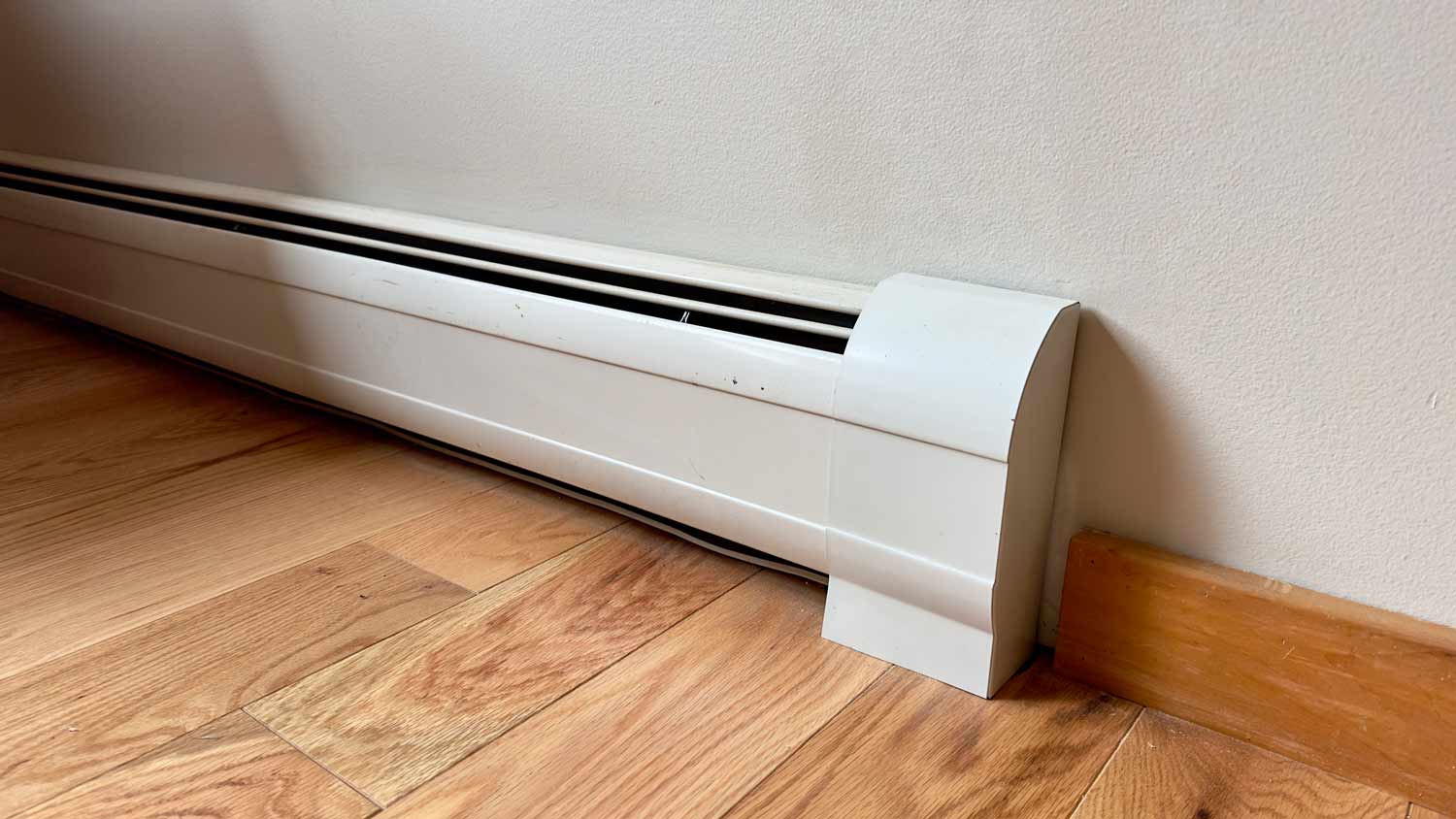
What you’ll pay in Columbus, OH, for furnace repairs depends on many factors. Here’s a breakdown of what can go wrong and the cost to fix those issues.
Learn the basic steps for how to replace a baseboard heater


Whether you’re swapping out an outdated unit or upgrading to a more energy-efficient model, learning how to replace a baseboard heater is possible for the advanced-level DIYer. However, this project can be hazardous due to the required electrical work, so it’s best to hire a local baseboard installer. This guide will walk you through the basic removal and replacement process for baseboard heaters.


If you’re up for the DIY, carefully follow these steps to replace a baseboard heater.
Ensure your safety by switching off the circuit breaker for the baseboard heater at the main electrical panel. Tape over the breaker to prevent accidental reactivation. Use a non-contact voltage tester to confirm the power is off before moving on to the next step.
Use a screwdriver to loosen the screws securing the old heater to the wall, which are located at the sides or top of the heater. Before touching the heater, make sure it has cooled down completely.
Carefully remove the baseboard heater from the wall to expose the wiring. Locate the metal cable entering the back of the heater. Unscrew the metal plate holding the wiring in place. Disconnect the wire nuts joining the heater's wires to the home's electrical wiring, and release the ground wire from the grounding screw.
Position the new heater on the floor near where it will be installed. Find the wire box on the unit closest to the wall wires and remove the cover plate using a screwdriver. Pull the wires from inside the new unit to prepare for connection.
Following the same method as the old unit, connect the heater to the home’s wiring. Match black to black (or red) and white to white, securing the connections with wire nuts and electrical tape. Attach the ground wire to the grounding screw on the new heater and replace the metal plate.
Position the new heater on the wall and secure it using screws. Align the screws with the existing wall anchors for a snug fit.
Once everything is secure, turn the power back on at the breaker and turn on the baseboard heater to make sure it’s functioning properly.
If you’re not comfortable with learning how to replace a baseboard heater, it’s highly advisable to seek out a pro rather than attempting the DIY. The cost of installing a baseboard heater professionally is between $75 and $250 per hour for labor, plus the cost of the unit. Baseboard heater prices vary significantly, with costs ranging anywhere from $50 to $1,300. While you can save on labor by replacing a baseboard heater yourself, hiring a pro will ensure it’s installed safely and properly for maximum efficiency.
Very professional and efficient with work. Answered each question I had with great knowledge and an informative response. Will be working with them again.
Window Depot did an amazing job on my deck. I wasnt sure what I wanted to do, but their composite decking was affordable and will last a long time. I am excited to have family over, and I am no longer embarrassed by my backyard. Jeff and the ground crew were polite, respectful, and caring for...
I play a yearly service fee to get my heat and AC checked out, twice a year. It's awesome. The techs are always great.
They did a great job and were easy to work with. They thinned the trees out while leaving a pleasing shape and setting them up for the next several years. They cleaned everything up and couldn't have been nicer.
Joel, the owner I think, works closely with his clients. There's a good presentation, but you never know if the flash will live up to the performance. Kenny was the job boss (I guess that's what he is). Everyone showed up on time, worked hard, was accommodating.. There was no juggling...
I've been around the block myself many times and know most of the lingo, angles, tricks and traps of contracting work on a home. And, I've taken the community school contracting licensing classes and heard contractors discuss openly and candidly trade practices and tales both good and bad. ...
I WAS SO PLEASED THAT THEY WERE ABLE TO SOLVE THIS SO QUICKLY. I CAN'T BELIEVE THAT I WASTED ALL THAT TIME WITH MY ORIGINAL INSTALLER! I WILL NOW USE GUARANTEED FOR ALL MY FUTURE HEATING/COOLING NEEDS.
From average costs to expert advice, get all the answers you need to get your job done.

What you’ll pay in Columbus, OH, for furnace repairs depends on many factors. Here’s a breakdown of what can go wrong and the cost to fix those issues.

Discover the true window AC unit installation cost to learn about labor, permits, and ways to save on your window AC project.

Find out the average humidifier repair cost, what impacts pricing, and how to save. Get expert tips to budget for your humidifier repair.

Forced-air systems provide a reliable source of warmth for your home, but what is forced-air heating, exactly? Let’s break it down.

Ductwork losing energy? Here are six duct sealing methods that will help you get some big savings on your monthly energy bills.

For your furnace to run, the pilot light needs to be on—so what do you do when it goes out? Learn how to relight the pilot light on a furnace in this guide.